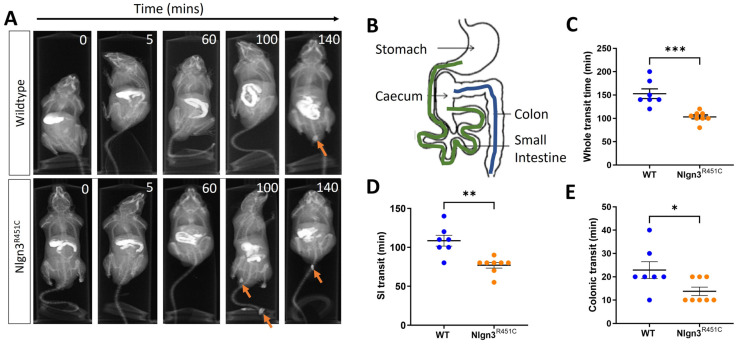Figure 1.
Faster in vivo gastrointestinal transit in Nlgn3R451C mice. (A) Representative X-ray images showing transit of barium sulphate in gastrointestinal tract and faecal pellets (arrows). (B) Diagram of mouse gastrointestinal tract indicating regions measured for small intestinal (beginning of duodenum after the pyloric sphincter to the ileum (before ileo-caecal valve)) (green) and colonic (blue) transit. Whole transit time (WT: W = 0.9, p = 0.2, Nlgn3R451C: W = 0.9, p = 0.4, Shapiro–Wilk test) (C), small intestinal transit time (WT: W = 0.96, p = 0.9, Nlgn3R451C: W = 0.8, p = 0.07, Shapiro–Wilk test) (D) and colonic transit time (WT: W = 0.9, p = 0.2 D’Agostino and Pearson test, Nlgn3R451C: K2 = 4.9, p = 0.08 (Shapiro–Wilk test is inaccurate for several identical data points) (E) were compared between WT (n = 7) and Nlgn3R451C (n = 8) mice. Data represented as scatterplots of mean ± SEM and individual data points. Student’s t-test * p < 0.05, ** p < 0.01, *** p < 0.001. All data passed normality testing.

